#canadian snakeroot
Photo
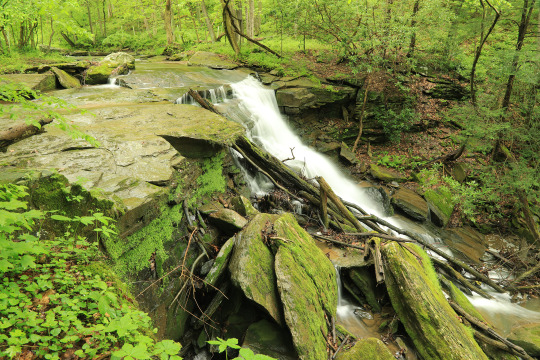

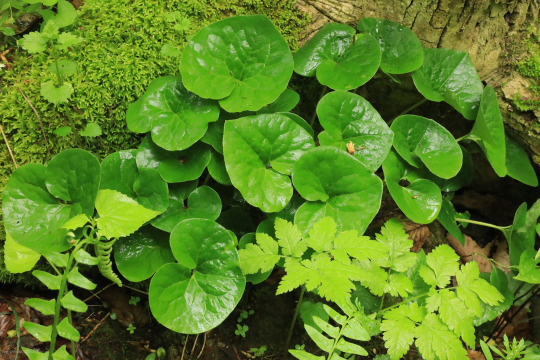


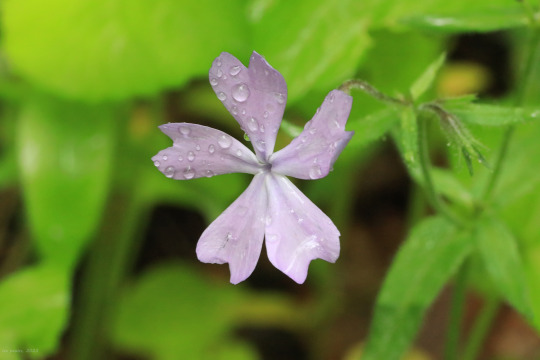
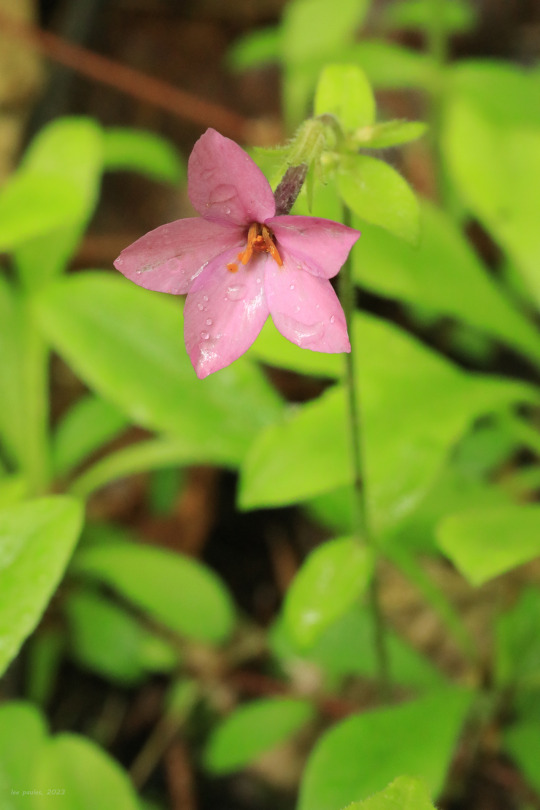
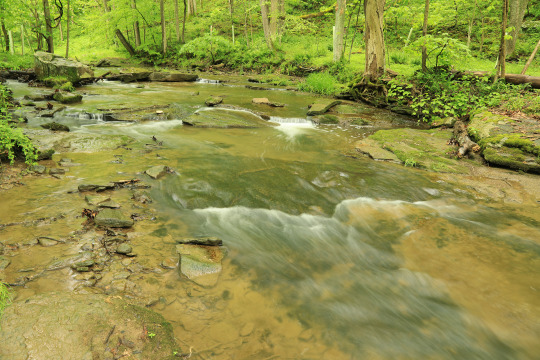
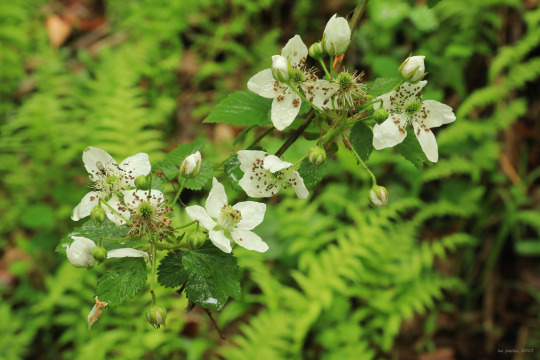
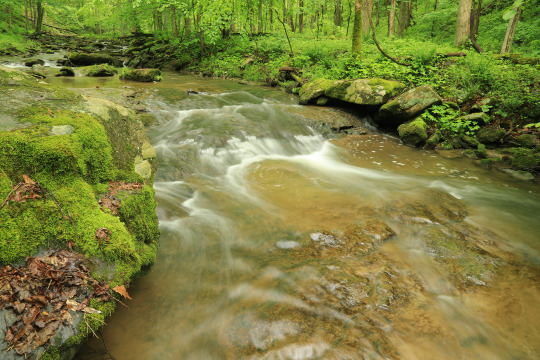
Part 2: After the Rain - Life in an Appalachian Temperate Forest.
From top: Wild ginger (Asarum canadense), also known as Canadian snakeroot; Philadelphia fleabane (Erigeron philadelphicus), a lovely spring aster deserving of a more dignified name; white wood violet (Viola sororia albiflora), a white variation of the common blue violet; woodland phlox (Phlox divaricata), also called wild blue phlox; creeping phlox (Phlox stolonifera), a mountain native and the most delicate and beautiful of Appalachia’s many wonderful phlox species; and Allegheny blackberry (Rubus allegheniensis).
#appalachia#vandalia#west virginia#toms run preserve#west virginia land trust#temperate forest#rain#intense green#flora#wildflowers#may#wild ginger#canadian snakeroot#phildaelphia fleabane#white wood violet#woodland phlox#wild blue phlox#creeping phlox#allegheny blackberry#common blackberry
457 notes
·
View notes
Photo

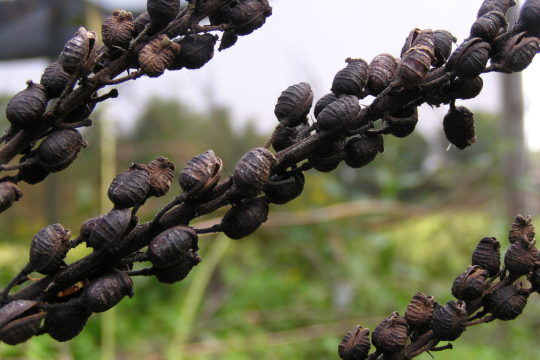
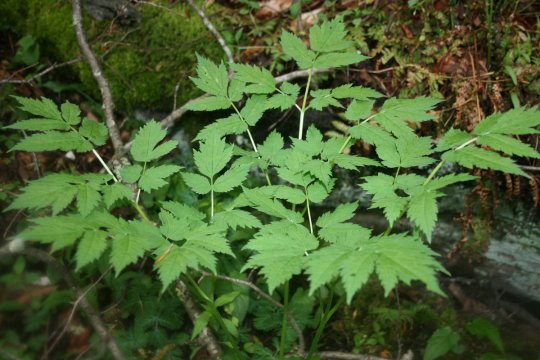

Black snakeroot (Actaea racemosa) has edible leaves.
More info on Plants for a Future.
#native Ontario plant species with edible parts#flowering plants#flowers#edible plants#native North American species#plants I want#black snakeroot#Actaea racemosa#Canadian leaves
6 notes
·
View notes
Text
I recently noticed some new plants in a little copse of trees that I share with a neighbor. After doing some research, I learned that one, Garlic Mustard, is an extremely prolific invasive that many states are working hard to eliminate. It grows quickly and spreads exponentially by seed. A dense patch can produce 20,000 seeds per square foot and these seeds can germinate for up to 10 years after they’ve dropped. No wonder it’s a problem & crowding out many native plants! The other, Canadian Black Snakeroot, I’ve never seen before but it is a native wildflower.
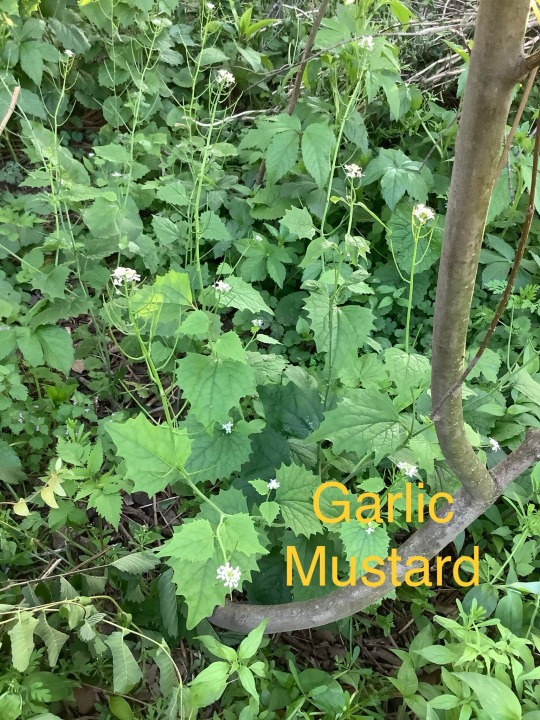

I spent today pulling every GM I could see up by the roots. The plants in the wagon are only about a 1/3 of the total I removed.
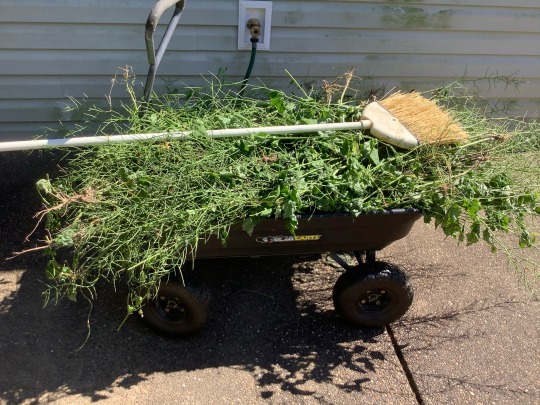
I sat down and started stripping off the seed pods, but only got 2/3 of them removed before my trash bag was full. As much as I hate the idea of burying compostable vegetation, to be safe that bag is headed to the landfill. The rest of the plant will be allowed to wilt, then I’ll return it to the woods so Mother Nature can reclaim the resources the interloper took from the Virginia bluebells, the Asiatic dayflowers (a personal favorite), wild geraniums, etc. The remaining plants in the wagon has been moved to a hot, dark, closed garage to wilt so the seeds can be collected and disposed of later without the worry they’ll get a chance to germinate.
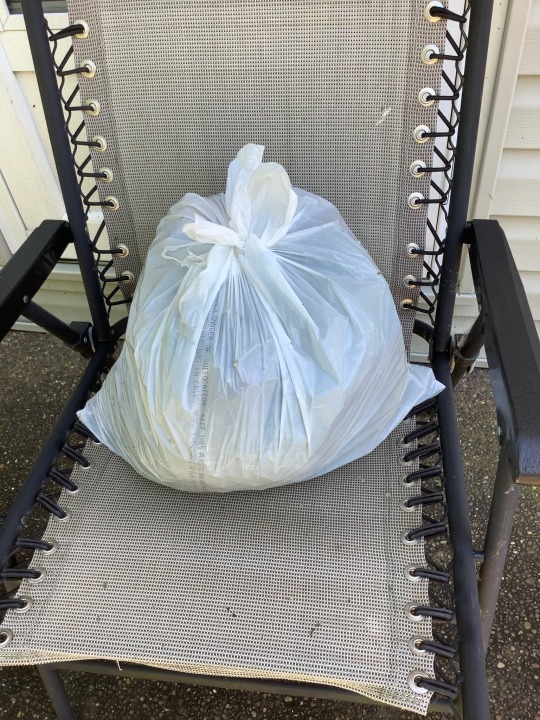

Unfortunately, I accidentally pulled a few of the CBSR too, but not enough to hurt the population. I’m sure I’ll be spending the next several years keepin the GM in check, but now that I know what I’m looking at it should be fairly easy to keep it from spreading. Also had the opportunity to show my neighbor what to keep an eye out for as well. She had never noticed it because she keeps to the fenced in part of her property.
Apparently, Garlic Mustard is edible, but this was just too much to worry with trying to save some to cook. Maybe next spring when there are new sprouts.
2 notes
·
View notes
Text
A List of Herbs and Spices
Acerola
African Bird Pepper
Agar Agar
Agrimony
Alfalfa
Alkanet
Alliums
Allspice
Aloe Vera
Angelica
Anise
Annatto
Arrowroot
Asafoetida
Ashwagandha
Arnica
Astragalus
Balm Of Gilead
Barberry
Barley
Basil
Bayberry
Bearberry
Bee Balm
Bee Pollen
Beet Root
Beth Root
Benzoin
Bilberry
Birthwort
Blackberry
Black Cohosh
Black Haw
Bladderwrack
Blessed Thistle
Blue Cohosh
Blue Flag
Blue Vervain
Blue Violet
Boldo
Boneset
Borage
Boswellia Serrata
Buchu
Buckthorn
Buckwheat
Bupleurum
Burdock
Burnett
Butcher’s Broom
Butternut
Cabbage
Calamus
California Poppy
Calendula
Canadian Snakeroot
Camphor
Caraway
Carob
Cascara Sagrada
Caster Oil
Catmint/Catnip
Cat’s Claw
Cayenne Pepper
Celandine
Celery
Centaury
Chamomile,German
Chamomile, Roman
Chaparral
Chaste Berry
Chervil
Chia
Chickweed
Chicory
Chipotle
Chives
Chrysanthemum
Cilantro
Cinnamon
Cinquefoil
Citric Acid
Clary
Clay
Cleavers
Clove
Club Moss
Codonopsis
Colicroot
Coltsfoot
Comfrey
Coneflower
Copal Oro
Coptis
Coriander
Cornflower
Corn Silk
Couch Grass
Cowslip
Cramp Bark
Cranesbill
Cubeb
Cumin
Curly Dock
Damiana
Damson
Dandelion
Devils Claw
Devils Club
Dill
Dong Quai
Dragons Blood
Dock
Dulse
Echinacea
Elder
Elecampane
Eleuthero
Epazote
Eucalyptus
Eyebright
False Unicorn Root
Fennel
Fenugreek
Feverfew
Feverwort
Figwort
Flax, Flaxseed
Frankincense
Fuller’s Earth
Galangal
Garlic
Gentian
Ginger
Ginkgo
Ginseng
Goat’s Rue
Goldenrod
Goldenseal
Gotu Kola
Grapeseed
Gravel Root
Greater Burnet
Great Mullein
Green Tea
Grindelia
Ground Ivy
Guarana
Gymnema
Hawthorn
Heartsease
Henbane
Henna
Hibiscus
Honeysuckle
Hops
Horehound, Black
Horehound, White
Horse Chestnut
Horseradish
Horsetail
Hydrangea
Hyssop
Irish Moss
Jasmine
Jewelweed
Jimsonweed
Juniper
Kava Kava Root
Kelp
Kudzu
Lady’s-mantle
Lady’s Slipper
Lavender
Lemon Balm
Lemon Verbena
Lemongrass
Licorice
Liferoot
Line
Linden
Linseed
Lobelia
Lomatium
Lovage
Lungwort
Lychii Berry
Mace
Madder
Mandrake
Maidenhair Fern
Maidenhair Tree
Mallow
Marigold
Marjoram
Marshmallow
Meadowsweet
Milk Thistle
Mistletoe
Motherwort
Mugwort
Muira Pauma
Mulberry
Mullein
Mustard
Myrrh
Neem
Nettle
Nutmeg
Oats
Olive Leaf
Onion
Oregano
Oregon Grape Root
Orris Root
Osha
Papaya Leaf
Paprika
Parsley
Passion Flower
Patchouli
Pau D’arco
Peppermint
Pennyroyal
Peony
Periwinkle
Peruvian Bark
Pipsissewa
Plantain
Pleurisy Root
Poke Root
Poplar
Prickly Ash
Primrose
Psyllium
Pukeweed
Purple Coneflower
Purslane
Quassia
Queen Of The Meadow
Radish Seed
Raspberry
Red Clover
Rehmannia
Reishi Mushroom
Rheumatism Root
Rhubarb
Rose/Rose Hips
Rosemary
Rue
Safflower
Saffron
Sage
Salt (Sea)
Saint John's Wort
Sarsaparilla
Sassafras
Savory
Saw Palmetto
Schizandra
Self-heal
Senna
Sesame
Shavegrass
Sheep’s Sorrel
Shepards Purse
Skullcap
Skunk Cabbage
Slippery Elm
Soapbark
Soapwort
Southern Wood
Spikenard
Spirulina
Squaw Vine
Squawroot
Stevia
Stickwort
Stillingia
Stone Root
Strawberry Leaf
Suma
Sweet Cicely
Sweet Sumac
Sweet Violet
Sweetgrass
Szechuan
Tansy
Tarragon
Thuja
Tea
Tea Tree Oil
Thyme
Tonka Bean
Tribulus Terrestris
Turkey Rhubarb
Turmeric
Unicorn Root, False
Usnea
Uva Ursi
Valerian
Vanilla
Vervain
Vitex/Chaste Tree
Violet
White Willow
Wild Yam
Willow
Wintergreen
Witch Hazel
Wood Betony
Wormwood
Xanthan Gum
Yam
Yarrow
Yellow Doc
Yerba Mate
Yerba Santa
Yohimbe Bark
Yucca
15 notes
·
View notes
Photo



The clumping, heart-shaped foliage of wild ginger (Asarum canadense) emerges from the forest floor in early to mid-April, often in dense colonies, and persists through autumn. While the velvety, intensely-green leaves are beautiful in their own right (particularly as a ground cover in shady wildflower gardens), an even more intriguing secret lurks below their spreading canopy: an unusual flower with three flared sepals fused into a hairy cup. The flower emits a foul odor that attracts the plant’s primary pollinators, flies and gnats. The pollinated flower develops into a pod, whose seeds are dispersed by ants. The photos above were taken on the Mon River Trail.
#appalachia#vandalia#west virginia#spring#flora#wildflowers#asarum#wild ginger#canadian snakeroot#asarabacca#mon river trail
51 notes
·
View notes
Photo


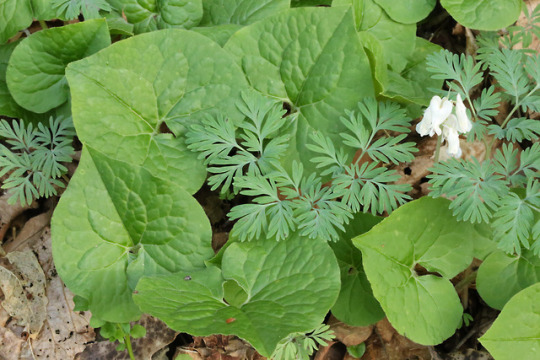
Canadian wild ginger (Asarum canadense), also known as Canadian snakeroot. The plant’s distinctive purple-brown flower, composed of three arching sepals fused into a cup, grows at ground level in the crotch between the plant’s twin leafstalks. The plants above were photographed along the Mon River Trail.
#appalachia#vandalia#west virginia#canadian wild ginger#canadian snakeroot#spring#wildflowers#asarum#mon river trail
32 notes
·
View notes
Text
I just...want to work in the garden and do nothing else. Stop only to eat and pee. I go in when the daylight’s done. And then all I want to do is look at more plants I can order and talk about my garden. All my plants are native to Ontario or nearby. All with edible parts except one. So. Plant species I have/am getting this year are:
001. Achillea millefolium (common yarrow) The red-flowered cultivar seems to have died over the winter, but the non-cultivar is growing strong and is also creeping past the stone border to become one with the grass. lol
002. Actaea racemosa (black snakeroot/black cohosh) Next weekend!
003. Agastache foeniculum (anise hyssop) Literally migrated from the place I planted it to a place it likes better, I guess. As in, there is no plant where I planted, but there is an anise hyssop in another part of that bed. You do you.
004. Allium canadense (meadow garlic/Canada garlic) Spreading slowly but reliably and super tasty.
005. Allium cernuum (nodding onion) It has flowered each year--this is year 4--but hasn’t spread at all. Very tasty, and I’ve bought some friends to help it along.
006. Allium schoenoprasum (chives/wild chives) Absolutely yum and doing very well.
007. Allium stellatum (prairie onion/autumn onion) Hopefully coming by the end of this month!
008. Allium tricoccum (ramps/wild leek) It will be quite some time before it even makes flowers which hopefully let it spread, so I won’t be able to reap the benefits for a while. But, both plants did come up this year and have now died back as expected. Hopefully they’ll continue to come up.
009. Amelanchier canadensis (Canadian serviceberry) Caterpillars. Are. EATING IT. Gypsy moth caterpillars. This is going to be a problem for some time until they pupate, I guess. Plant’s generally okay, though. I won’t be getting fruit anytime soon, though.
010. Anaphalis margaritacea (pearly everlasting) Very healthy plants keeping the sunflowers under some control. This spring was my first year eating the shoots. Can’t say anything about the taste specifically, as they went into a pasta sauce, but that sauce was delicious.
011. Andromeda polifolia (bog rosemary) Next weekend!
012. Aquilegia brevistyla (smallflower columbine) Growing very well, more flowers this year. Next year I’ll eat some (flowers, only the flowers are edible).
013. Aquilegia canadensis (Canada columbine/red columbine) Flower stalk doesn’t seem as tall this year, but it still has a lot of flowers. They’re a lovely refreshing sweet snack (just the flowers).
014. Arabis alpina (alpine rockcress) Next weekend! I had one last year, but it didn’t survive the winter. The poor thing was so root-bound there was no soil in the pot, so I’m not surprised it didn’t make it. Hopefully the new one will be in better condition.
015. Arctostaphylos uva-ursi (bearberry/kinnikinnick/pinemat manzanita) Not doing great and I’m not sure why. That area is reasonably well-drained and it gets part sun, part shade. Oh well. Maybe I’ll move it to the hill in the back. It seemed to like the hill I had it on at my old apartment.
016. Argentina anserina (silverweed cinquefoil) Hopefully coming by the end of this month!
017. Arisaema triphyllum (jack-in-the-pulpit) It came up! I was sure it had died last year. But no, it’s fine. Male this year. Hopefully female next year (I’m trying to see if the berries can be dried into edibility like the corms, and if they can I want to make jam or something with them).
018. Armeria maritima (thrift sea-pink) Drooping! It’s a drought-tolerant plant that will die if over-watered so I don’t water it more than once a week and I don’t water deeply, but it’s been hot so maybe it needs more or maybe I managed to overwater it anyway. Frick. Flowering very nicely though.
019. Aronia melanocarpa (black chokeberry) Doing just fine. No flowers and I don’t expect them for another couple of years at least, but it’s growing well.
020. Artemisia frigida (prairie sagewort/fringed sagebrush) Already spreading in the bed. Should look very nice when it fills in.
021. Aruncus dioicus (bride’s feathers/goat’s beard/buck’s beard) Growing more quickly than the internet told me it would! And going to flower this year too, which will be lovely.
022. Asarum canadense (Canada ginger) Doing fine for now, but burnt a lot in the sun last year. Likely to do so again. I’m going to plant something in front of it to shade it better. See, I wouldn’t have put it there if it was full sun because it’s a shade to part sun plant, but that area isn’t full-sun, it’s part sun; however, the sunlight it does get is very strong in the summer and the poor thing gets burnt.
023. Asclepias incarnata (swamp milkweed) Growing like a beast! Flowers were gorgeous last year. I don’t expect this to be any different, and maybe some monarch butterflies will pay it a visit.
024. Asclepias ovalifolia (oval leaf milkweed/dwarf milkweed) Hopefully coming by the end of this month!
025. Asclepias syriaca (common milkweed) Mine seemed to come up much more slowly than those I’ve seen elsewhere, but it is a fairly young plant. I expect it will come up earlier next year. And it’s doing fine now.
026. Asclepias tuberosa (butterflyweed) Hasn’t come up yet, but they can take till middle of June to start emerging, so I’m not going to worry about it yet.
027. Asimina triloba (pawpaw) All three trees are alive, though with very different rates of growth. I got them at the same size at the same time, but in trying to figure out what the best thing was for them, I planted one on a hill next to the door of my at-the-time apartment, one by the fence at the opposite side of the yard, and the third I kept in a pot, which I brought in for the winter. That spring, the potted tree leafed out first at the end of April, and the one on the hill in the middle of May. The third didn’t bud at all. I continued to water it, but I was sure it was dead. Then the house my apartment was in caught fire so I had to go to a new place (same landlords, so still allowed to plant on the new property) and didn’t want to leave my plants behind. It was the end of June. All my plants were potted. and I was going to leave the lifeless stick behind AND THEN IT SUDDENLY HAD BUDS. So I potted it and took it too. All three survived the transplant, but the tree I had initially taken inside (but is now outside) is the biggest, and that little stick is still the smallest. lol
028. Asplenium trichomanes (maidenhair spleenwort) Very little still, but seems healthy. I hope for its fronds to spill over my newly constructed garden wall when it’s bigger.
029. Athyrium felix-femina (lady fern) Doing very well, as a fern that can tolerate full sun.
030. Caltha palustris (marsh marigold) It is a marsh plant and there is no pond on the property to plant it, but there is a leaking eavestrough, which I thought would do well enough along with heavy watering. So far I have been correct.
031. Campanula rotundifolia (harebell) Very lush and green. I struggled to keep it alive that first year, but three years later it’s perfect.
032. Cardamine concatenata (cutleaf toothwort) Sometime this summer!
033. Castilleja miniata (paintbrush) Sometime this summer!
034. Ceanothus americanus (New Jersey tea) Not ready to use in tisanes yet, but growing well.
035. Cerastium arvense (field chickweed) The first two years the thing was barely alive, but this year’s it’s moment to shine as it spreads and flowers.
036. Cercis canadensis (redbud) No flowers this spring, but wonderful foliage. Fingers crossed for next year.
037. Comptonia peregrina (sweetfern) Next weekend!
038. Coreopsis lanceolata (lance-leaved tickseed) The first plant I attempted died, but this one’s doing very well.
039. Cornus canadensis (bunchberry) Next weekend! I mean, my plant from last year would likely be fine if the squirrels hadn’t dug it up, as would the one before that (because that one came from the old place and had survived the winter just fine!). So, I’m going to plant the new one in a different spot and hope the fluffy-tailed rodents leave the poor thing alone this time.
040. Cornus florida (flowering dogwood) Just a baby still, but its leaves are nice and green. I had one before it that really liked the hill I had planted it on back at the old place but died in the pot before I could put it in its new home.
041. Cystopteris bulbifera (berry bladder fern) Doing just fine. I love my ferns.
042. Dalea purpurea (purple prairie clover) Hopefully coming by the end of this month!
043. Deschampsia caespitosa (tufted hair grass) Not doing too well. Was fine last year, so I’m not sure what’s going on.
044. Echinacea purpurea (purple coneflower) I’ve always loved these. They’re edible, medicinal (with caution), have lovely flowers, and attract lots of pollinators including bees and butterflies. Mine is doing perfectly. No flowers yet this year, but very green healthy foliage.
046 Erythronium americanum (trout lily/dogtooth violet) Still no flowers this spring, but they did come up, so maybe next year.
047. Eupatorium purpureum (sweet-scented Joe Pye weed/gravel root/purple Joe Pye weed) Soon! Also, do you know how this is eaten? Its root is literally burnt and then you use the ashes to flavour your food. The plant is otherwise poisonous, so how it was found out that it could be used this way conjures up amusing scenarios for me.
048. Fragaria vesca (woodland strawberry/wild strawberry/alpine strawberry) I have strawberries! They’re far from ripe yet, but developing well. They’re also spreading over the hill I planted them on and will hopefully give the garlic mustard and dog-strangling vine a run for their money.
049. Fragaria virginiana (wild strawberry/Virginia strawberry/common strawberry/mountain strawberry) Because one native species of strawberry isn’t enough, I have both. This one is also making strawberries and nicely filling out the area I put it in.
050. Galium boreale (northern bedstraw) Newly planted! The first one of these I planted didn’t survive the winter, but I hadn’t been able to plant it until autumn (because I hadn’t yet been told where I could plant). This one has the rest of spring, the whole summer, and fall until frost to establish itself, and I’ve seen a number of them growing wild at the edge of the ravines, so it should be fine.
051. Gaultheria procumbens (American wintergreen/eastern teaberry/boxberry/checkerberry) Next weekend! I actually already have one and have had it for a couple years, but it’s another that came so root-bound there wasn’t any soil in the pot. I planted it hoping for the best, but it seems to be in a very slow decline. So I’m going to plant another one, hopefully not so root-bound and that will maybe either give it a boost (plants of the same species will often help each other when sick by transferring nutrients) or else take over when the first one dies.
052. Geum aleppicum (yellow avens) I didn’t plant this, and I can’t find it for sale anywhere anyway, but it’s a common plant that shows up as a weed. Being native as well as edible, it’s allowed to stay wherever it isn’t directly in my way.
053. Geum canadense (white avens) Same as above. lol Anyway, both species have attractive foliage. They’re likely not used as garden plants because of how common they are as weeds and because their flower stalks are long and leggy. But I’m happy to have them.
054. Geum rivale (purple avens) Newly planted! This one is offered as a garden plant, though fairly rare, and I’ve finally got my hands on one! All of the Geum species in my garden seem to be doing just fine, so I expect this will fine too. It’s the first plant I’ve put in a new area that doesn’t drain very well which makes it perfect for plants like this one that grow in clay on stream banks.
055. Geum triflorum (prairie smoke) Green leaves. Flower stalks up. This is a pretty reliable plant because it doesn’t die back in the winter, it just sort of sits there waiting for spring and then resumes growth like nothing happened. The first year it drooped a lot but once it established itself there was no stopping it and the transplant went smoothly too.
056. Grindelia squarrosa (gumweed) Hopefully coming by the end of this month!
057. Helianthus divaricatus (woodland sunflower) This is a sunflower that can actually stand a fair bit of shade. I thought mine had died last year due to the foliage and stemming dying back after a squirrel broke it and it and it was still summer. But it’s come up this year and I’m starting to think nothing short of cooking a sunflower’s roots will actually kill it.
058 and 059. Helianthus nuttalli (Nuttall’s sunflower/common tall sunflower) and Helianthus pauciflorus (stiff sunflower/beautiful sunflower) All I know is, I ordered both, I received two small plants, by the time I got them in the ground they were barely alive, that area is now being overtaken by sunflowers, and it could be one species, or it could be both, I don’t know. I did thin out some shoots this spring and add them to a very flavourful pasta sauce. I also thinned out a bunch of their roots last fall. To look at them, you wouldn’t know that either of these had happened, and I’m going to have to thin out more. They’re also putting up shoots between the stones of the cement path. There will be sunflowers here until the end of time.
060. Helianthus tuberosus (sunchoke/Jerusalem artichoke/suntato) Because I don’t learn, I planted yet another sunflower species last year, in a different area, because dammit I want my suntatoes that taste like artichokes. I planted one last year. I took and ate a bunch of tubers in the fall. There are currently five plants. This should be interesting.
061. Heliopsis helianthoides (false sunflower/sweet oxeye) After getting off to a rocky start last year, this one’s doing just fine, and also looks to be living up to its resemblance to sunflowers in more than just appearance.
062. Hibiscus moscheutos (swamp rose mallow) One of them appears to have died so I hope the other isn’t headed the same direction. Seems to be coming up normally though. Also I learned the flowers can change colour from year to year which was a huge surprise to me from the first year to the second. No idea what it will be like this year.
063. Hierochloe odorata (sweet grass/vanilla grass) It flowered last year, which was lovely. I hope it does so again this year. Foliage is nice and green anyhow.
064. Humulus lupulus (common hop) Growing nicely now, though its first several shoots died this year. It seems to just be a very impatient plant in the springtime despite not being very frost hardy. So it put out shoots, which died in the frost, and then put out more, which also died, etc. until finally there was no more frost so it just kept growing. That’s one way to do it, I guess. lol Most other frost-tender plants tend to be more cautious about when they put out new growth. had a hop plant at my old apartment, which really liked the place I put I put it in, but it died when I potted it to try and take with me.
065. Impatiens capensis (jewelweed/spotted touch-me-not) Hopefully coming by the end of this month!
066. Juglans nigra (black walnut) This tree has likely been on this property since before I was born. I tapped it spring before last. I’ll tap it next spring too. Seems to be a healthy tree.
067. Kalmia latifolia (mountain laurel) They’re not native to Ontario but they are native to eastern North America, in the Appalachian mountains. I figured if they could survive mountain weather they could handle south Ontario winters, and so far it has. It’s not edible but I fell in love with them a long time ago when reading David Attenborough’s The Secret Life of Plants. And they’re making buds this year!
068. Lactuca canadensis (Canadian lettuce) Yes! We have a native lettuce. Most people will pull it up as a weed along with dandelions and thistles, though. I let it stay wherever possible. It’s not like I can just buy a new one, so I count myself lucky when they come up in my garden.
069. Lilium michiganense (Michigan lily) It made smaller ones, but they don’t seem to have survived for whatever reason. The older ones are very robust this year, though, and are budding with what looks like will be many flowers.
070. Lilium philadelphicum (wood lily) Newly planted! I have not had much luck with these, but hopefully this year’s the year. I have two plants, so maybe they’ll help each other.
071. Lindera benzoin (spicebush) No flowers or butterflies yet, but it’s a healthy bush and lives up to its name.
072. Linum lewisii (blue flax) Newly planted! I’ve wanted these for a long time but the places that carried them either wouldn’t deliver or didn’t have them as plugs or potted stock (I find seeds too unreliable). But now I have a couple in the large stone garden pot that I specifically filled with dirt that would allow for good drainage, for those plants that can survive the cold but not sitting in water.
073. Lupinus perennis (sundial lupine) Soon! Or I already have it. Not sure. See, I was sent an email by the company saying I’d probably accidentally gotten a bigleaf lupine instead and they gave me a coupon for the following spring to get a confirmed sundial lupine, but there is a chance I already have it. Either way it’s a nice plant, so whether I have two plants of the same species or two different species is fine.
074. Lupinus polyphyllus (bigleaf lupine/common lupine) I actually haven’t been able to find this species available for delivery anywhere, so if that is what I currently have, then I’m delighted and this is the best plant mixup that could possibly happen (there have been a number). Whatever it is is a very attractive plant even with just the foliage. I hope it makes flowers this year.
075. Mahonia repens (creeping Oregon grape) Speaking of plant mixups! The first time I ordered this I got a Potentilla nepalensis instead. I didn’t know it at the time, as it had a tag saying “Mahonia repens”, but then it flowered...I wouldn’t have minded terribly much if it had been a native Potentilla species, but “nepalensis” is definitely not that. Well, I emailed the company with a photo and they promptly delivered not one, but two creeping Oregon grape plants, and both seem to be doing okay, making new growth, survived the winter, which the potentilla did not.
076. Maianthemum stellatum (starry false Solomon’s seal) They seem to be doing well! They flowered, but I don’t know if there will be berries. Next year maybe, but then you don’t really see Maianthemum berries until late summer, so maybe there will be a couple this year.
077. Mentha arvensis (wild mint) It’s doing exactly what mint does. Tastes wonderful, which is a great reason for thinning it out and pulling it out from between the sidewalk stones.
078. Mertensia paniculata (tall bluebells) Currently flowering. Despite the name, though they do grow taller than their cousin the Virginia bluebells, I wouldn’t say they’re a bigger plant overall. Very nice though. The flowers are a delicate light blue.
079. Mertensia virginica (Virginia bluebells) When I planted the rootstock in the early summer and nothing came up at all, I thought they had died. But nope! They came up vigorously this spring, with huge leaves and incredibly blue flowers. The flowers are don and it’s starting to die back now, but what a gorgeous springtime plant it is.
080. Monarda didyma (scarlet beebalm) My theory is if you put two members of the mint family next to each other, they’ll keep each other at bay. I’m probably wrong. Anyway, this is already spreading in two directions. Last year caterpillars at a lot of its flowers. I hope that won’t happen this year.
081. Monarda fistulosa (wild bergamot) Has become a very big plant, but politely hasn’t really left it’s immediate area. They make great dried flowers after the winter, by the way, as the seedheads retain the scent. Especially if you squeeze them.
082. Monarda punctata (horsemint) This is starting to fill out now, but compared to the other members of its genus took a very long time to go past a teeny tiny little growth. Last year it got huge shortly after I planted it, so we’ll see if it does that this year. I hope so. The bees, wasps, and other pollinators absolutely loved it.
083. Myosotis laxa (smallflower forget-me-not) I didn’t plant it, I can’t even find it available for sale. It just grows as a weed. It’s just as blue as other forget-me-nots, but with stems that are very leggy and even smaller flowers than the popular garden species. But it’s native so it stays where it’s not directly in my way. It’s very prolific, lots of plants in the garden.
084. Myrica gale (sweet gale/bog myrtle) Only just started making new growth. It seems to be on its way out and I’m not sure why, but it makes me sad. I think last year was really hard on it being so hot so early and I didn’t have a hose then, so I was stuck carrying buckets of water up from my apartment in the basement. But I have a hose this year and I’ve been watering regularly, so maybe, just maybe, it will spring back into action this year. It’s such a pretty bush when in full foliage and the leaves taste like green tea.
085. Oenothera fruticosa (narrow-leaved sundrops) Next weekend! I’ve grown another species which has finished its lifecycle (they’re biennial) and sadly doesn’t seem to have successfully reseeded itself. But maybe this one will.
086. Onoclea sensibilis (sensitive fern) This poor thing struggled hard last year. I planted it between a tree and the house, but it still got a lot of sunlight. Still, it came up this year, and in my experience, second year plants tend to be much more hardy, so we’ll see. It’s doing fine for now.
087. Opuntia fragilis (fragile prickly pear) I did put it in a fairly dry area that gets full sun, but it does struggle in the winter and spring. It is starting to bounce back, though, just like it did last year, and the pieces it scattered are making roots of their own. All of whom are spiky bastards.
088. Opuntia humifusa (eastern prickly pear/devil’s tongue) This did just fine. I had it in a big stone pot which I moved to an area that gets no rain or snow on it, and it’s making new growth now that I’ve moved the pot back into the full sun. It like to spike me whenever I move the pot.
089. Osmundastrum cinnamomeum (cinnamon fern) Next weekend!
090. Oxalis stricta (yellow woodsorrel/sourgrass) It’s not technically native to Ontario, but it is native to Michigan and moved up here decades or possibly centuries ago. I didn’t plant it and you can’t find it in stores because it’s considered a weed, but it is coming up in my garden, it doesn’t hurt anything, and it is a delicious little plant, so it stays.
091. Parthenocissus quinquefolia (Virginia creeper) I didn’t have to buy this because it was already in the yard (it’s common in the ravines), but if it wasn’t I would have, because it’s gorgeous and I like the taste of the berries. It’s a native relative of Boston ivy, so if you’re wanting a wall climber, please get Virginia creeper instead. They’re available at a lot of garden centres and online.
092. Phlox divaricata (woodland phlox/blue phlox) It’s growing, but I think one of the white avens is overcrowding it, so I’ll probably dig that one up and eat it so the phlox can have more space.
093. Podophyllum peltatum (mayapple) Three plants in last year. One plant up this year. Oh well. It’s growing nicely, so hopefully it will spread.
094. Polygonatum biflorum (smooth Solomon’s seal) Hopefully coming by the end of this month!
095. Polystichum achrosticoides (Christmas fern) It doesn’t die back in the winter! I mean, the leaves get kind of yellowed, but otherwise just hangs out and makes new growth in spring. My first attempt with ferns (ostrich ferns) was a failure, but so far all my other fern species have been successful and are currently thriving.
096. Prunus americana (American plum) It’s very top heavy when leafed so it flops over whenever it rains which is kind of funny, but it seems to be doing fine.
097. Prunus nigra (black plum/Canada plum) My first black plum died, but this one seems fine.
098. Prunus pumila (sand cherry) Soon! And it better bloody be a sand cherry and not a purple-leaf sandcherry, which is a hybrid, like the last company I ordered one from sent me. But that company didn’t specialize in native plants and carried both plants, whereas this company does specialize in native plants and does not advertise the hybrid at all.
099. Prunus serotina (black cherry) This is the very cherry that is used to flavour black cherry ice cream! But my little tree (not that little anymore lmao) hasn’t made flowers yet. It has nice foliage though it keeps trying to grow into the neighbour’s fence. Don’t know why. The sun doesn’t come from there. Maybe it will flower next spring.
100. Pycnanthemum tenufolium (slender mountain mint) Despite being part of the mint family, this is actually a very polite plant so far that stays in its immediate area.
101. Pycnanthemum virginiana (Virginia mountain mint) Just as polite as its cousin. My first died and I blame the person who lived in another unit who decided that garden bed was an ash tray. I managed to put a stop to that, got all the cigarettes out, dug out a stump, added new dirt, and planted a new Virginia mountain mint as well as bride’s feathers. That particular tenant isn’t there anymore and nobody else does anything with the outside, except to put a garden hyacinth there, which I’ve left in its pot and been watering. I’m not just going to leave the poor thing to die. Anyway, the Virginia mountain mint flowered last year and I hope it does so again this year.
102. Ratibida columnifera (yellow coneflower/upright prairie coneflower) Newly planted! I don’t like to get the cultivar versions if I can avoid it, but I will if that’s all that’s available, or in this case, to get the plants I really wanted, I needed to get something that would put me over the minimum cost. But I didn’t want to leave it at that, so I bought a non-cultivar this year so they can be friends.
103. Ratibida pinnata (gray-headed coneflower/yellow coneflower/pinnate prairie coneflower) This almost flowered last year and the I accidentally broke it with the hose. That will not happen this year. I don’t see a flower stalk yet, but the leaves look healthy.
104. Rhus aromatica (fragrant sumac) It’s putting out flowers, but it did so last year and nothing happened, so I guess we’ll see this year.
105. Rosa blanda (smooth rose) A rose without thorns! Or almost. It’s got leaves out, but it’s a slow grower for a rose and hasn’t flowered yet.
106. Rubus occidentalis (black raspberry) This was supposed to be a red raspberry because black raspberries are easy to find in the ravines, but that’s okay, and I did order a new red raspberry which will hopefully actually be red. lol
107. Rubus strigosus (American red raspberry) Soon! Sometimes considered a variety of Rubus idaeus, which is the one you find in grocery stores. There is one patch I’ve found of them in the ravines, but they’re not nearly as common here as the black raspberry. Hopefully this new plant I get will actually be the red raspberry.
108. Rudbeckia laciniata (cutleaf coneflower/green-headed coneflower) There are two plants with very different leaves growing there. One of them I hope is the plant I intended, but won’t know until they flowers. They’re both doing well, whatever they are.
109. Sambucus canadensis (common elderberry) It’s making flowers this year! I learned the hard way that this species does NOT like being transplanted to a pot, which I had to do to take with me to my current apartment. However, it did eventually bounce back and didn’t mind being transplanted to its current location, which it likes just fine.
110. Shepherdia canadensis (Canada buffaloberry) Next weekend!
111. Solidago canadensis (Canadian goldenrod) I tried to buy this plant but they accidentally sent me an aster species instead. However, there are a bunch of goldenrods growing a different area that I didn’t plant and I believe to be this species.
112. Solidago nemoralis (gray goldenrod) Droops a lot but bounces back quickly.
113. Solidago simplex (spike goldenrod/sticky goldenrod/Mt. Albert Goldenrod) I’ve tried this once before and it died, possibly from being small enough that the ledge it was next to prevented it from getting enough sunlight. I’ve planted the new one far enough from the ledge that it does not get shaded by it, so hopefully that will do the trick.
114. Spiraea alba (meadowsweet) The first year in the new place it struggled a bit, but it’s fine now and it flowered last year.
115. Symphoricarpos orbiculatus (coralberry) Next weekend! It’s also the first time I’ve seen it available anywhere.
116. Symphyotrichum ciliolatum (fringed blue aster/Lindley’s aster/northern heart-leaved aster) A very polite aster, or maybe it’s just being kept under control by the sweet grass (055). Its foliage is that lovely gray-green colour often referred to as “blue” when people talk about holly, spruce, and hosta leaves, and its flowers are that pale blue people often think of as purple or periwinkle but shows up digitally as light blue.
117. Symphyotrichum cordifolium (heart-leaved aster) Doing fine where I planted it.
118. Symphyotrichum laeve (smooth aster) I didn’t have the tag and thought this was a violet when I planted it. It now thinks it owns the space, but looks very nice when it’s in bloom.
119. Symphyotrichum lanceolatum (panicled aster/lance-leaf aster/willow aster/tall white aster/eastern line aster/white-panicle aster/narrow-leaf Michaelmas daisy) Lots of common names. It decided it belonged on the sidewalk last year, but surprisingly agreed when I placed its branches behind the stone line of the garden. We’ll see if we can come to the same agreement this year.
120. Symphyotrichum novae-angliae (New England aster) Not flowering yet this year, but looks it’s getting ready. They’re such a lovely rich violet to purple and I love that they flower so late into autumn too.
121. Taraxacum officinale ceratophorum (fleshy dandelion/horned dandelion/rough dandelion) Obviously didn’t buy it. lol But it is in my garden along with non-native subspecies. Since they don’t harm the plants they grow among, they can stay as long as they’re not in my way.
122. Trillium erectum (red trillium) Next weekend! And I possibly already have one. See, I ordered three trillium species last year as bulbs and planted them, but lost two of the tags. Only two species came up and only the one with the tag flowered this year. So I don’t know if the one that didn’t flower was erectum or grandifolium, so I ordered both again.
123. Trillium flexipes (nodding trillium) It came up this year and it was lovely. Died back now though.
124. Trillium grandiflorum (great white trillium) Next weekend! And I might already have one: see 109. Ontario’s provincial flower. I once made a set of coat of arms style designs with each of the provincial flowers and animals.
125. Urtica dioica gracilis (stinging nettle) Planted itself in my garden back at the old place and if I didn’t trust the other plants would be safe after I left (I was right, by the way; the whole backyard has been turned over) I definitely didn’t think this would be either, so I potted it to take with and got stung for my trouble, but it’s happy in its new home. Lives up to its name, of course, but I did eat a few of the tops earlier this year in soup and later in pasta sauce, so I suppose we’re even.
126. Vaccinium angustifolium (lowbush blueberry/wild blueberry) When you see “wild blueberries” in the grocery store in Ontario, it’s this. It always seems to struggle with mould in the spring. Every year I’ve had it. I got it a friend in hopes it would help, but they seem to both be dealing with it now. I’ll have cut back the bad branches and hope that helps. It usually does, but I don’t know why it starts in the first place. None of the neighbouring plants are suffering.
127. Vaccinium corymbosom (highbush blueberry) This is the species you’ll most often see in the grocery store in Ontario as “blueberries”. My bush always makes some flowers and berries, but it’s not doing great right now. Not sure why. It doesn’t get mould the way the lowbush blueberries do. I hope it’s not on its way out. You can get them at a lot of garden centres, but there’s usually a minimum amount of plants or a minimum cost, and garden centres that specialize in native plants don’t often carry these, while garden centres that don’t often don’t have any other native species or at least not any I need or have room for. So for my purposes they’re kind of hard to get.
128. Verbena hastata (blue vervain) Was off to a slow start this year, but it’s doing just fine now.
129. Viburnum acerifolium (mapleleaf viburnum) Next weekend!
130. Viburnum lentago (nannyberry) It’s doing fine, just fine, but I doubt I’ll get any berries for some time yet.
131. Viburnum nudum cassinoides (Witherod viburnum) A lovely little bush so far. Maybe I’ll get flowers next spring.
132. Viola adunca (hookedspur violet/western dog violet/early blue violet) Hopefully coming by the end of this month! My first go with this plant was not successful. Hopefully better luck this time.
133. Viola blanda (sweet white violet) Exactly what it says on the tin. There’s a delicate pink to the centre, and the foliage is nice too.
134. Viola canadensis (Canada violet) It’s tall for a violet, and spreading nicely with lots of flowers.
135. Viola labradorica (purple Labrador violet) Next weekend! Despite it’s name, it is also native to Ontario.
136. Viola sororia (wood violet/blue violet) This is most common violet you see generally, which makes it hard, though not impossible, to find in garden centres. However, they’ve planted themselves in the yard and I’ve successfully transferred one to one of the beds. I have other place I want to put the rest before I dig up that area.
137. Vitis riparia (riverbank grape) I have two plants because I didn’t realize when I bought it that hiding among the weeds in another part of the garden there already was one. Oh well. Guaranteed cross-pollination of two genetically diverse individuals. They’re both doing well.
138. Zizia aurea (golden alexanders) They’re doing well. It looks a lot like wild parsnip, which it is related to, but it’s much more friendly, and I ate some this spring.
I may be able to order more. We’ll see. One of my go-to places says they won’t ship until “opening day”. I guess they mean when their area reopens, but that might not be till next year. Meantime, I will continue to construct my garden wall in the back.
32 notes
·
View notes